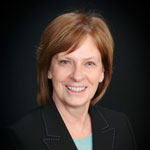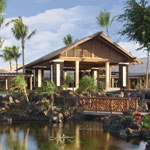At a Glance
Regional headquarters
Dallas
Regional development employees
14
Average project duration
55 days
Regional locations
649
Starbucks Corporation is a caffeinated monster. The world’s largest specialty-coffee retailer, which also owns Seattle’s Best Coffee and Teavana, had 18,278 locations in 10 countries as of the end of 2012. It operated 9,462 of those locations (7,887 in the Americas), with licensees operating almost 8,816 additional locations in shopping centers, airports, and elsewhere. Kim Williams, director of store development for the company’s south central US region, is responsible for 649 locations in total. By way of comparison, she says her former employer, Brinker International (where she worked for 22 years as the vice president of real estate development), managed a little more than 600 Chili’s restaurants in total. “Our region is as big as the entire Chili’s brand,” she says.
With so many stores to look after, it’s a wonder that Starbucks has been able to create a brand identity at all. Breaking up its development processes by region has certainly helped, but also, unlike many retailers, the company doesn’t build according to a prototype, affording its teams a looseness that they use to their maximum advantage.
According to Williams, every store’s layout is different, and while the store-development teams have palettes of design details and furnishings to choose from, they can also bring in unique objects as needed, depending on the store’s classification. Completed coffee shops can include furnishings and fixtures the store-development managers find via shopping expeditions as well as custom-designed furniture specified by design managers and built by the company’s custom furniture-building partners. “No two stores are alike—we incorporate unique items so our customers find our stores both familiar and interesting,” Williams says.

Equipment is still standardized, though, and Williams says keeping on top of it is a challenge because Starbucks is always seeking out the newest, most innovative equipment. One of the latest pieces of hardware her team is working to accommodate in select stores is the Clover, an expensive reverse French press that brews special exotic coffee.
Development itself is Williams’s principal task. The Starbucks approach is overwhelmingly build-to-suit, meaning store-development managers work with brokers to search for real estate, then hire developers to build what they need. “We rarely buy property or ground lease,” Williams says. “When we find a piece of property located where we need to be, we find a developer to come in and develop it. The developer may build a single-tenant building just for us or build a multiunit building with us on the end cap. The challenge is the sequencing of events between [the] internal Starbucks process and a developer and their consultants.”
Williams and her team then come in and finish each store using selected contractors that must be approved at the corporate level. “We choose our own contractors and, to a great extent, lead them through the qualification process,” Williams says. “Seattle corporate requires contractors to know how to log on and use systems, especially with us building LEED-certified stores. So there’s training and testing, then Seattle signs off.”
In addition to new builds, Williams’s team is responsible for renovating the company’s existing store base in her region. Minor renovations costing less than $70,000 are completed five years after a store’s opening, and major renovations costing up to $250,000 occur 10 years after an opening.
“Design is a significant part of Starbucks,” Williams says, “and [it] revolves around … everything we do.” In fiscal year 2013, Williams’s team will renovate 130 stores in the south central region—while continuing to develop new stores using Starbucks’s open-ended guidelines. ABQ
_____

Meet Kim Williams
Where did you go to school?
I attended the University of Arkansas. [I studied] philosophy and psychology and planned to go to law school.
What was your first construction job?
To save enough money for law school, I got a job at Brinker International in the property-development department, so I was reviewing civil-engineering documents right out of school with a philosophy degree. The opportunity was good enough that it was difficult to go back to law school.
How did you wind up working for Starbucks?
When Brinker stopped building new restaurants in 2008, like so many companies, I transitioned to operations and then came to Starbucks to get back into development. Starbucks had started to grow again, and I had the opportunity to build the Dallas-based store-development team.
What goals do you have in your current role?
We’ve recently expanded my department, and I’m looking forward to facilitating its growth.


